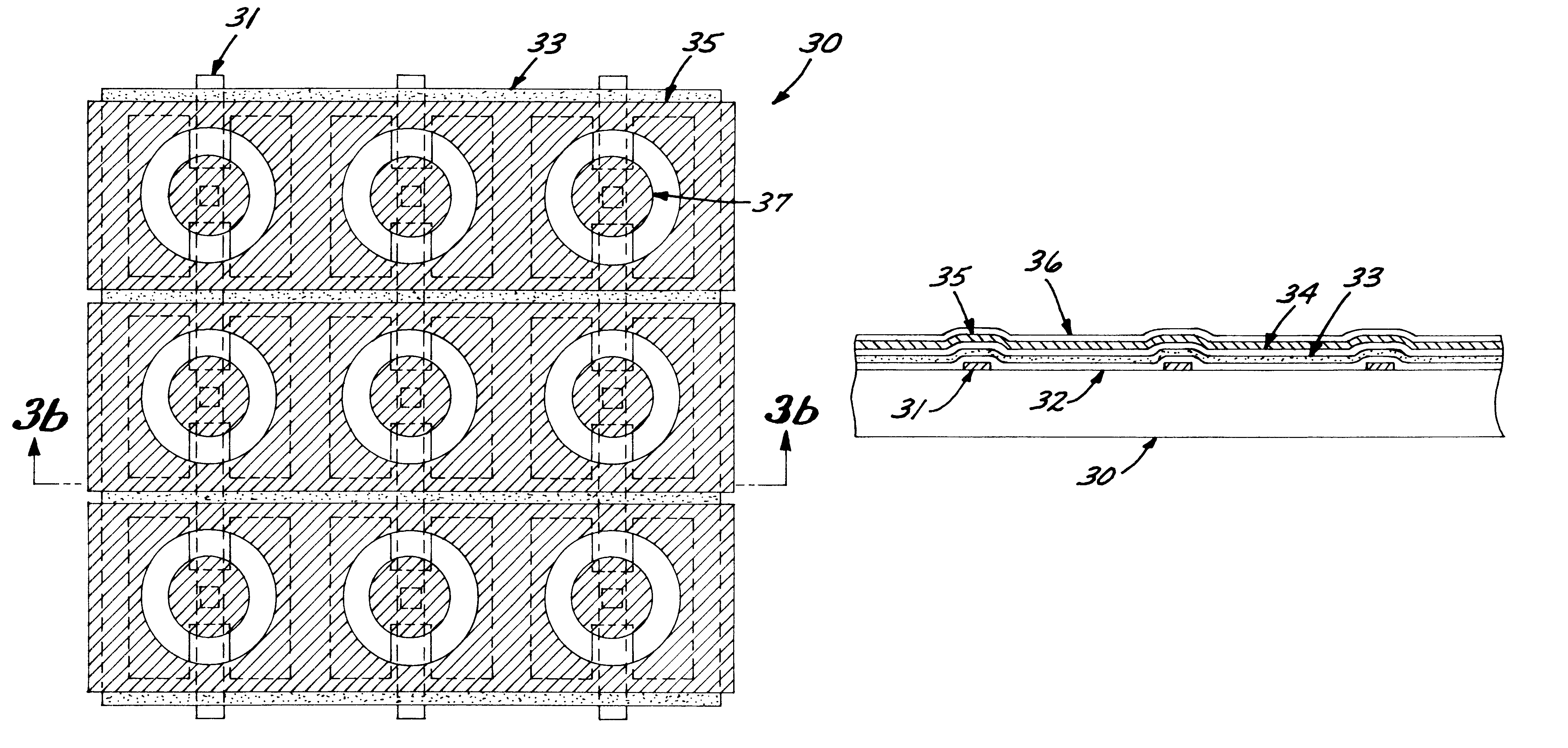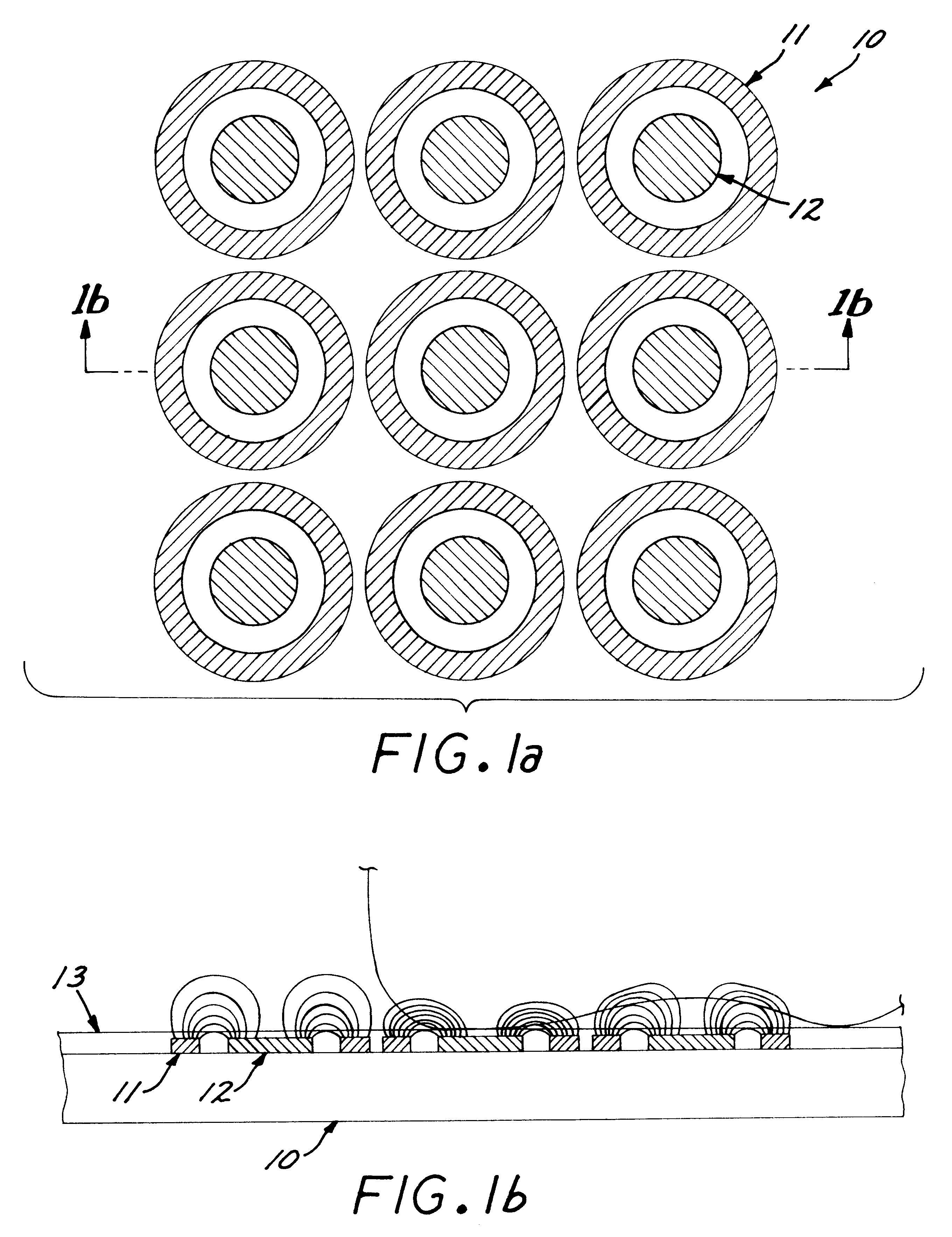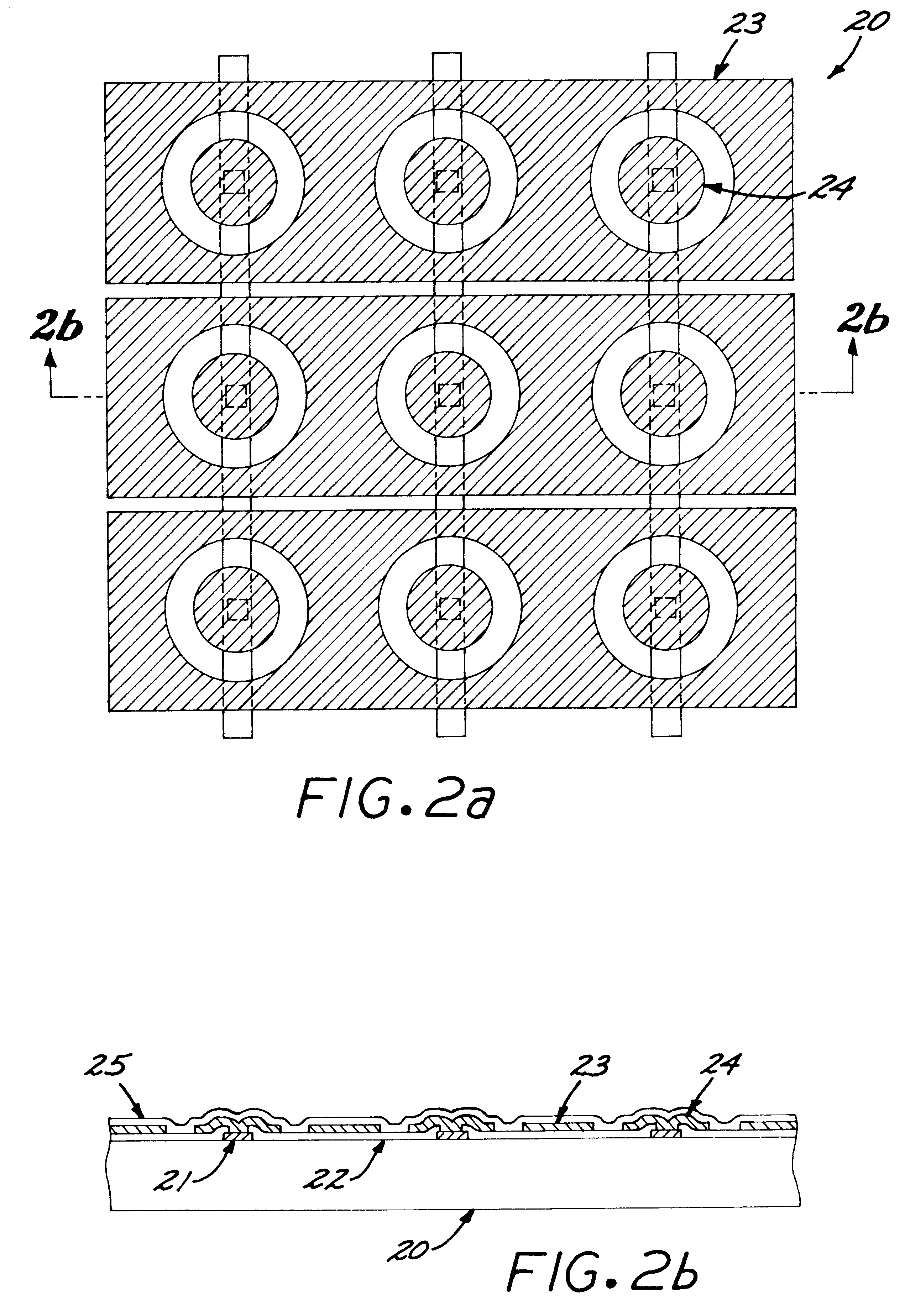Capacitive two dimensional sensor
a two-dimensional sensor and capacitive technology, applied in the field of capacitive two-dimensional sensors, can solve the problems of difficult production difficult to produce with a high yield of good devices, and high manufacturing cost of semiconductor chips of this size, so as to reduce residual signals and reduce residual signals
- Summary
- Abstract
- Description
- Claims
- Application Information
AI Technical Summary
Problems solved by technology
Method used
Image
Examples
Embodiment Construction
Referring to the figures, each element (pixel) in the sensor array of the present invention has drive and pickup electrodes, the drive electrodes and pickup electrodes not being required to be in a common plane or layer. Optionally, a shield electrode may also be used to provide isolation between drive signals and pick up signals and to control the distance above the surface that the array is sensitive to. The most sensitive area is the gap between the drive and pickup electrodes, the gap being ideally circular in shape to minimize the changes in sensitivity caused by the orientation of the fingerprint features (a square or rectangular gap will provide satisfactory results in most cases). Wider gaps will extend the sensitive area further above the array surface. A shield or other grounded conductors in the gap between the drive and pickup electrodes tends to move the sensitive area closer to the surface. It is preferable that the pickup electrode and the drive electrode are symmetri...
PUM
 Login to View More
Login to View More Abstract
Description
Claims
Application Information
 Login to View More
Login to View More - R&D
- Intellectual Property
- Life Sciences
- Materials
- Tech Scout
- Unparalleled Data Quality
- Higher Quality Content
- 60% Fewer Hallucinations
Browse by: Latest US Patents, China's latest patents, Technical Efficacy Thesaurus, Application Domain, Technology Topic, Popular Technical Reports.
© 2025 PatSnap. All rights reserved.Legal|Privacy policy|Modern Slavery Act Transparency Statement|Sitemap|About US| Contact US: help@patsnap.com



